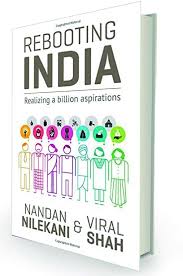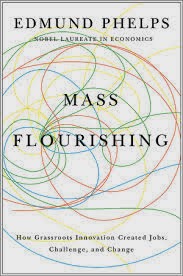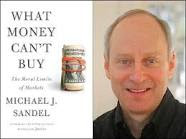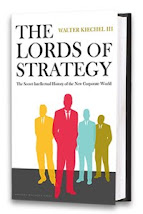Mass
Flourishing
How Grassroots
Innovation Created Jobs, Challenge and Change
Edmund Phelps
Princeton
University Press
pp.378.
Mass Flourishing is a deceptive title for a remarkable book. While the
title indicates that it would throw light on innovation and job creation, it is
much larger. It covers several centuries of thought; has a range that touches
economics but moves into politics, literature and philosophy; places short term
events on a long timeline; helps understand the implications of a patchwork
over the fabric of economies. All these are packed into a tight and gripping
writing.
The book engages with the concept of a “modern economy”. How do we
achieve happiness in a just and equitable society? The process of unravelling
what a modern economy leads to a discussion of multiple economic ideas
capitalism, socialism, Marxism, corporatism. All these ideologies are discussed
in the context of economic growth, common good and happiness. While statistics
help in parameterizing, Phelps draws upon art and literature to assess how
people were perceiving the changes. These ideas are discussed in the context of
a larger eco-system. Nothing happens in vacuum – even individual excellence and
scientific discoveries and inventions happen at a time and place; the context
is as important as the event.
Look at the following quote to understand where Phelps is coming from:
 “Some might think to say that gifted inventors,
even if untrained, were adding to scientific knowledge when their tinkering led
to an invention. But these inventors did not create scientific knowledge any
more than bartenders inventing new drinks create chemical knowledge: they
lacked the training to do so. An addition to scientific knowledge occurred if
and when trained theorists managed to understand why the invention worked. (It
took a musicologist to see how Bach’s cantas “worked”). (p.13)
“Some might think to say that gifted inventors,
even if untrained, were adding to scientific knowledge when their tinkering led
to an invention. But these inventors did not create scientific knowledge any
more than bartenders inventing new drinks create chemical knowledge: they
lacked the training to do so. An addition to scientific knowledge occurred if
and when trained theorists managed to understand why the invention worked. (It
took a musicologist to see how Bach’s cantas “worked”). (p.13)
So, what makes this modern economy? Where are the ideas coming from? Are
they from the science labs? How do ideas emerge? How do we understand the
non-pecuniary motives driving innovations? How do these ideas grow, and spread?
These are difficult questions. But in these he sees the seeds of a modern
economy, where ideas, innovation and invention were converted to economic
products leading to an explosion of material benefits. The modern economy was
about increase in productivity- resulting in fast and boundless growth. But the
question was whether growth resulted in widespread benefit? While the numbers
of rich increased, what about the wages of the unskilled workers? Were they
benefitting from the innovation and the modern economy?
 Phelps connects several unrelated events to trace the evolution of
modern economy. The absolute and real increase in wages; reduction in incidence
of disease because of advancement of science (elsewhere, and a result of
international exchanges); reduction of poverty and pauperism. He then examines
urbanization. He argues that rural areas only had under employment but not unemployment.
But working for somebody, for an enterprise defined what employment was, and
also sharply defined the phenomenon of unemployment. Urbanization was on the
rise, because it was a worthwhile trade-off for the underemployed rural
populace. In understanding this, Phelps not only uses data of that era, but
also refers to Blake’s poetry and the image of “dark satanic mills”.
Phelps connects several unrelated events to trace the evolution of
modern economy. The absolute and real increase in wages; reduction in incidence
of disease because of advancement of science (elsewhere, and a result of
international exchanges); reduction of poverty and pauperism. He then examines
urbanization. He argues that rural areas only had under employment but not unemployment.
But working for somebody, for an enterprise defined what employment was, and
also sharply defined the phenomenon of unemployment. Urbanization was on the
rise, because it was a worthwhile trade-off for the underemployed rural
populace. In understanding this, Phelps not only uses data of that era, but
also refers to Blake’s poetry and the image of “dark satanic mills”.  Urbanization was also about clustering. People went to places where
there were new ideas, new challenges; industrial agglomerations. So the quality
of life and moving out of poverty was not only the economic aspect, but the
pleasure of encountering new problems and the satisfaction of solving them. The
nuanced view he has about an assembly line is evidenced by this observation: “Charlie
Chaplin’s image of the assembly line in his 1937 film Modern Times looked more
mindless than oppressive” (p.52). Modern economy, while it brought higher
wage and better financial returns, also had associated questions on impacts on
mental stimulation.
Urbanization was also about clustering. People went to places where
there were new ideas, new challenges; industrial agglomerations. So the quality
of life and moving out of poverty was not only the economic aspect, but the
pleasure of encountering new problems and the satisfaction of solving them. The
nuanced view he has about an assembly line is evidenced by this observation: “Charlie
Chaplin’s image of the assembly line in his 1937 film Modern Times looked more
mindless than oppressive” (p.52). Modern economy, while it brought higher
wage and better financial returns, also had associated questions on impacts on
mental stimulation.
Modern economies brought benefits in better health and longevity. Even
the less advantaged had these benefits. This led to a different perspective:
more time invested in equipping oneself and planning for a longer career. Going
to a “work place” beyond the closed community relationships led to an
“interchange” of ideas – where a large number of diverse people turned up. So
what happened to people during these changing times? Here Phelps moves beyond
data and uses literature – the ideas expressed in the works of Charles Dickens,
Mary Shelley, Emile Bronte, Jane Austen, Balzac and Emily Zola. He moves from
fiction to art and to music. The canvas gets bigger. His understanding of
economies and economics is not purely dependent on trade, economy and monetary
policy. He is questioning Ceteris Paribus (All other things being equal);
arguing that all other things are never equal; we live in a dynamic world; and
we pick up signals from multiple fields to understand the changing phenomenon
of the dominant paradigm.
 With innovation, modernization, longevity and better quality of life as
a backdrop Phelps examines the other building blocks. These come from a larger
eco-system. In discussing institutions, he examines institutions of governance
(feudal systems, church, governments); institutions of justice; institutions
that grant ownership rights on property. As the world moved from production
based economies to idea based commerce, there was a need to protect
intellectual property rights. Starting with intellectual property protection
Phelps lays the foundation for modern enterprise to emerge. The emergence of
the enterprise is not a pure function of innovation and risk taking. It needs
an eco-system that provides protection for investments in ideas. This could come
through patent laws that provide exclusivity to commercially use the ideas to
reap the benefits of investments.
With innovation, modernization, longevity and better quality of life as
a backdrop Phelps examines the other building blocks. These come from a larger
eco-system. In discussing institutions, he examines institutions of governance
(feudal systems, church, governments); institutions of justice; institutions
that grant ownership rights on property. As the world moved from production
based economies to idea based commerce, there was a need to protect
intellectual property rights. Starting with intellectual property protection
Phelps lays the foundation for modern enterprise to emerge. The emergence of
the enterprise is not a pure function of innovation and risk taking. It needs
an eco-system that provides protection for investments in ideas. This could come
through patent laws that provide exclusivity to commercially use the ideas to
reap the benefits of investments.
Just ideas and inventions do not result in economic phenomena.
Protecting intellectual property makes sense only when there is a possibility
of commercial exploitation of the idea. A commercial exploitation needs an
element of scale. It has to move beyond the individual capability. Chartered
corporations that undertook business with the backing of monarchies, laid the
framework for a corporation. Initially Charters were set up with the intention
of trade, exploration and colonization. However, as monopoly institutions with
state support, charters did not have the agility to innovate and expand the
horizons. It was a hurdle. Eventually this grew into the idea of a joint stock
company. This provided the entrepreneurs the protection of a limited liability.
The legal framework for this emerged in the United States and moved on to Great
Britain and then extending all the way to Germany and France. This was followed
up by better bankruptcy protection laws and a vibrant banking system.
On the political front, the movement towards representative democracy
provided an ecosystem for accountability. Accountability to the electorate
supported the interests of the underserved, and moved towards publicly funded
education and opened support institutions. There were downsides to this, but
the larger ecosystem for enterprise to flourish was more likely in a
representative democracy than an autocracy.
 While urbanization brought about unemployment, the modern economy
brought taxation that collected money from the wealthy to provide social
security for the deprived. This brought to the fore, the question of
inclusivity. Does the modern economy and its growth provide opportunity for
everybody to get employment and a share in the economic action? Phelps argues
that if capitalism is working in the right spirit with other institutional
mechanisms fostering innovation, the answer might be yes. But most of the time
capitalism does not work the way it ought to – the governments direct the
economic space in a manner that stymies innovation and free trade. This could
happen if the state was a major actor as it were in the Chartered companies,
and it could happen when the state resorts to corporatism – an arrangement when
the state favours agreements with corporations and workers to create exclusive
rights. While Phelps does not refer to India in this context, this could have
happened in the licence raj, and might be continuing with crony capitalism.
While urbanization brought about unemployment, the modern economy
brought taxation that collected money from the wealthy to provide social
security for the deprived. This brought to the fore, the question of
inclusivity. Does the modern economy and its growth provide opportunity for
everybody to get employment and a share in the economic action? Phelps argues
that if capitalism is working in the right spirit with other institutional
mechanisms fostering innovation, the answer might be yes. But most of the time
capitalism does not work the way it ought to – the governments direct the
economic space in a manner that stymies innovation and free trade. This could
happen if the state was a major actor as it were in the Chartered companies,
and it could happen when the state resorts to corporatism – an arrangement when
the state favours agreements with corporations and workers to create exclusive
rights. While Phelps does not refer to India in this context, this could have
happened in the licence raj, and might be continuing with crony capitalism.
Phelps argues that the age of innovation and mass flourishing happened
between 1820s and the 1960s (the years of the great depression
notwithstanding). He argues that this was a western phenomenon led by the
United States and followed by European nations. He illustrates why China,
though it had the ingredients of density of population, exchange of ideas,
innovation and even enterprise did not keep up as it lacked economic
institutions and economic culture (p.106).
Phelps goes on to discuss economic thought that was against the concept
of modern economy – Socialism and Corporatism. He argues that neither the
middle-income earners were pushed into the proletariat, nor did wage inequality
appear to increase (p.114). The discontent with the modern economy was with the
precariousness of jobs and wages – the episodic high unemployment and recession
led job losses in certain sectors. Phelps sees socialism as a concept with
inherent contradictions. Look at this quote of Sassoon that he reproduces:
 “Socialism’s appeal, when it had one, was to say,
at one and the same time, that its mission was to transcend capitalism while
improving it; that everyone was equal by that the proletariat was the leading
class; that money was the root of all evil but the workers needed more of it;
that capitalism was doomed but the capitalists’ profits were as high as ever;
that religion was the opium of the people but that Jesus was the first
socialist; that the family was a bourgeois conspiracy but it needed defending
from untrammeled industrialistion; that individualism was to be deplored but
that capitalist alienation reduced people to undifferentiated atoms; that there
was more to politics than voting every few years while demanding universal
suffrage; that consumerism beguiles the workers but they should all have a
color television, a car and go on holidays abroad.”
“Socialism’s appeal, when it had one, was to say,
at one and the same time, that its mission was to transcend capitalism while
improving it; that everyone was equal by that the proletariat was the leading
class; that money was the root of all evil but the workers needed more of it;
that capitalism was doomed but the capitalists’ profits were as high as ever;
that religion was the opium of the people but that Jesus was the first
socialist; that the family was a bourgeois conspiracy but it needed defending
from untrammeled industrialistion; that individualism was to be deplored but
that capitalist alienation reduced people to undifferentiated atoms; that there
was more to politics than voting every few years while demanding universal
suffrage; that consumerism beguiles the workers but they should all have a
color television, a car and go on holidays abroad.”
Phelps goes on to discuss economic thought that was against the concept
of modern economy – Socialism and Corporatism. He argues that neither the middle-income
earners were pushed into the proletariat, nor did wage inequality appear to
increase (p.114). The discontent with the modern economy was with the
precariousness of jobs and wages – the episodic high unemployment and recession
led job losses in certain sectors. Phelps sees socialism as a concept with
inherent contradictions, examining tension between socialist values and Western
humanist values. While Phelps looks at socialism as an ideology to be debated
and critiqued, he does not think that Corporatism has strong ideological roots.
It could be the association of Corporatism with Mussolini and the fascist
regime and it could also be that Corporatism is also anti-competitive in
nature. However he engages with the concept at length, citing examples from
Europe, where it evolved, how it grew and why it was not a positive thought for
the modern economy. Phelps argues that corporatism was anti innovation,
anti-enterprise and growth. He even indicates that the reason for the decline
of the Western enterprise, particularly of the United States is because of the
modern day corporatism. While recession and slowdown is seen as recent
phenomena, Phelps traces this recession back to the 1970s.
The last section “Regaining the Modern” deals with the approach to
taxation. Low taxation, heavy borrowing – and spending – both on welfare as
well as a supply side Keynesian measure to maintain growth leading to very high
fiscal deficit was unsustainable. Not only did the State borrow, but it
encouraged corporations and individuals to borrow – in the hope that this would
lead to growth and larger tax collections. That this did not work, is there for
us to see.
 The last section “Regaining the Modern” deals with the approach to
taxation. Low taxation, heavy borrowing – and spending – both on welfare as
well as a supply side Keynesian measure to maintain growth leading to very high
fiscal deficit was unsustainable. Not only did the State borrow, but it
encouraged corporations and individuals to borrow – in the hope that this would
lead to growth and larger tax collections. That this did not work, is there for
us to see. A high tax regime with a wider net gave State enough resources for
funding infrastructure and public projects. A low tax regime, wider compliance
and exemptions at the lower level resulted in an illusion of “reduction in take
home inequality” but actually reduced investments in public infrastructure
leading to the poor paying out of pocket for some services (education,
healthcare) that should have been available in public domain.
The last section “Regaining the Modern” deals with the approach to
taxation. Low taxation, heavy borrowing – and spending – both on welfare as
well as a supply side Keynesian measure to maintain growth leading to very high
fiscal deficit was unsustainable. Not only did the State borrow, but it
encouraged corporations and individuals to borrow – in the hope that this would
lead to growth and larger tax collections. That this did not work, is there for
us to see. A high tax regime with a wider net gave State enough resources for
funding infrastructure and public projects. A low tax regime, wider compliance
and exemptions at the lower level resulted in an illusion of “reduction in take
home inequality” but actually reduced investments in public infrastructure
leading to the poor paying out of pocket for some services (education,
healthcare) that should have been available in public domain.
This book is vast in its expanse, deep in its insight and philosophical
in its approach. It is not only a must-read, but a must-multiple-read book. The
canvas laid out by Phelps overwhelms you, but this is by far one of the best
treatises written on the concept of a modern economy.



































































![Hyderabad: A Book [or two] and A Movie](http://3.bp.blogspot.com/_mxWA9ZVkKhQ/S0vnLAO90CI/AAAAAAAABYM/WgbSbAcAaEk/S214/luther1.0.jpg)







![Two Lives [and this is not about Vikram Seth]](http://1.bp.blogspot.com/_mxWA9ZVkKhQ/S0vjkyDYRvI/AAAAAAAABXM/mJGK-_gZiNg/S214/mansur.jpg)





1 comment:
This write-up itself makes an independent read apart from reviewing a book. I will read the book. But there is some repetation at couple of places.
Corporatism is a nice coin and interesting too. Was that term existed before? Rather used before (widely) ?
Post a Comment